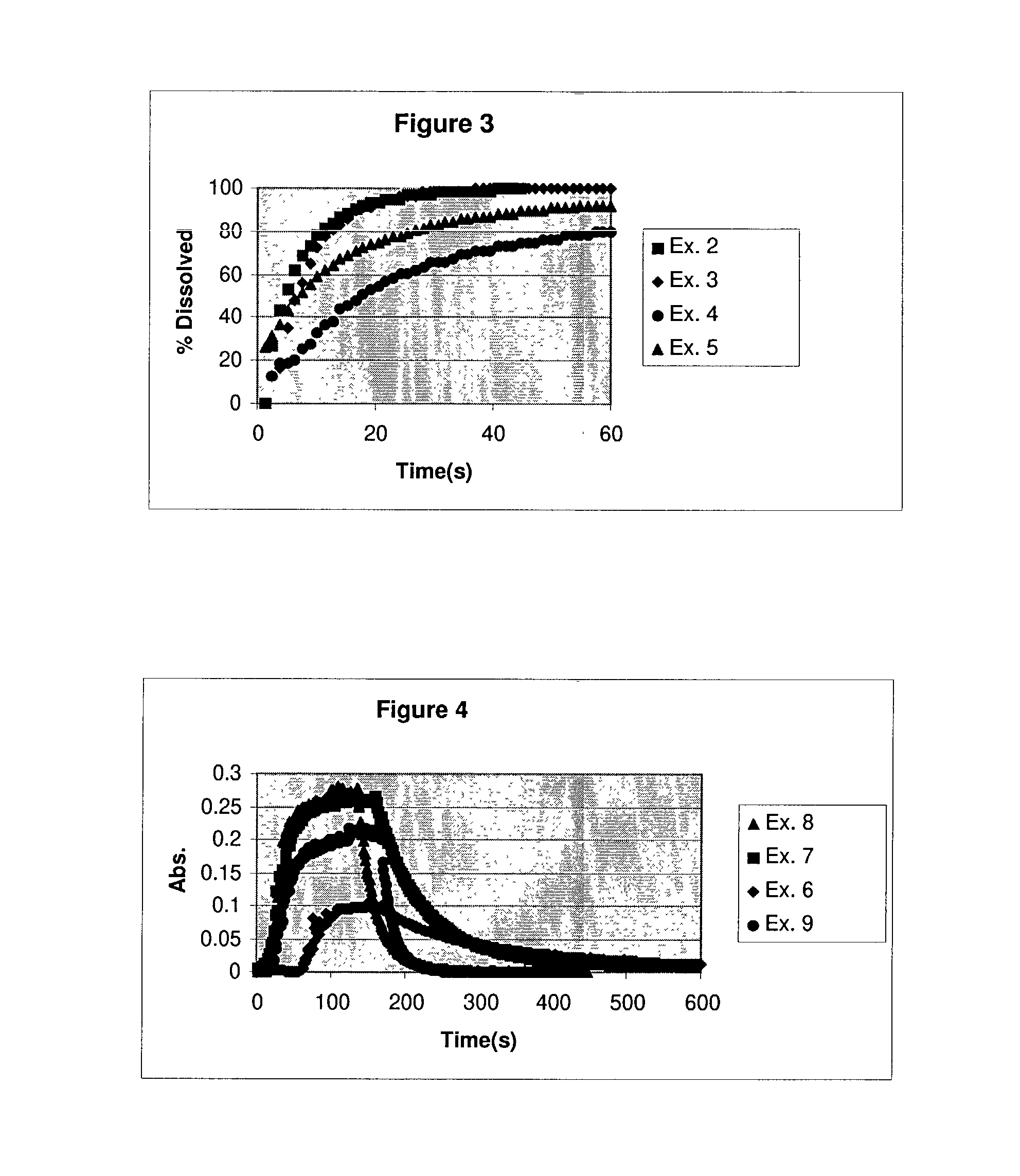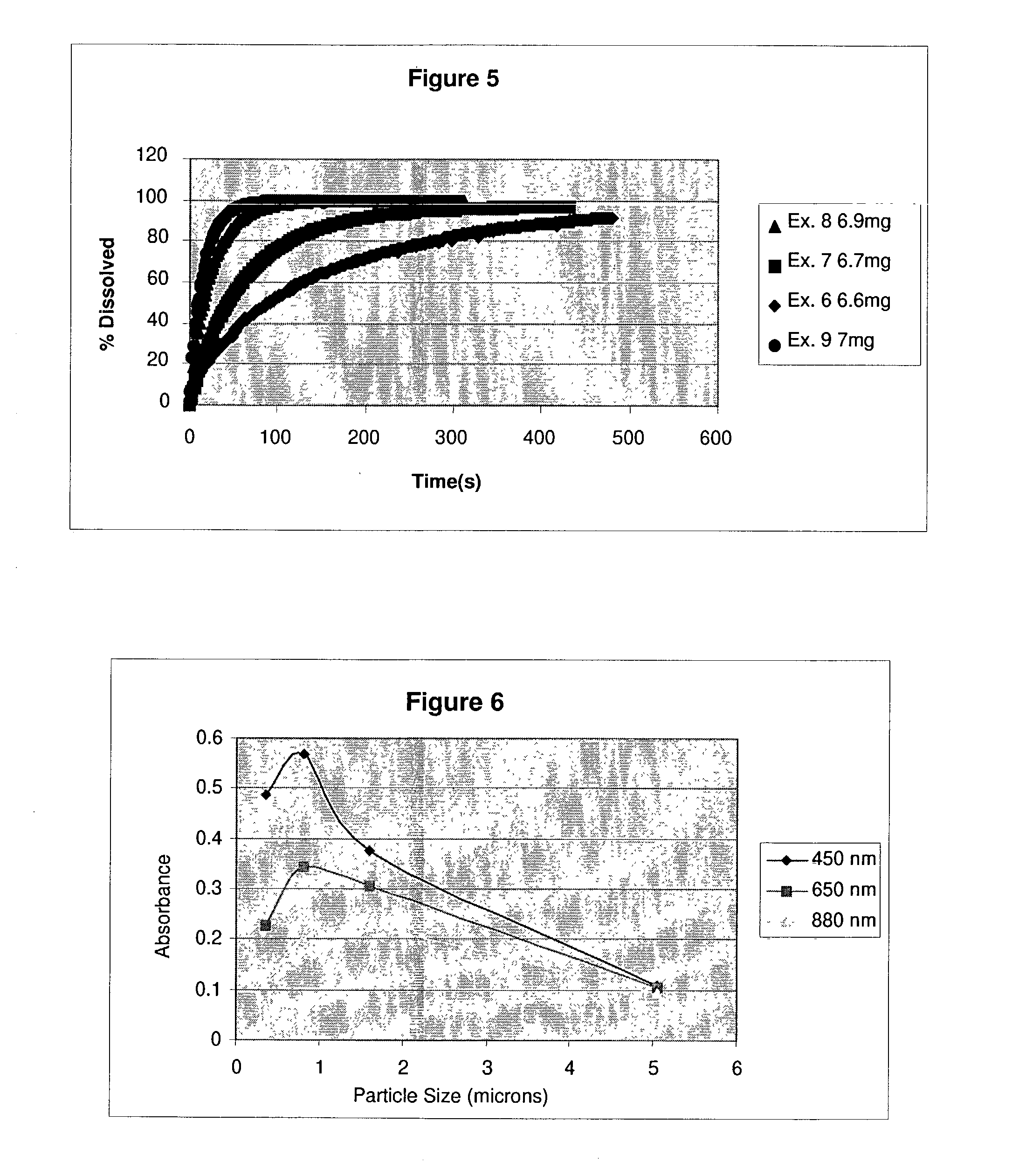Real time monitoring of small particle dissolution by way of light scattering
a technology of light scattering and small particles, applied in the field of real-time monitoring of small particle dissolution by way of light scattering, can solve the problems of poor bioavailability, inconvenient measurement of dynamic, or real-time dissolution of a material, and inefficient hplc methods,
- Summary
- Abstract
- Description
- Claims
- Application Information
AI Technical Summary
Problems solved by technology
Method used
Image
Examples
examples 6 through 9
Measurement of Percent Dissolved Material for Wet Milled Particles of Danazol.
[0039] Another embodiment for the method of the present invention is to dose a sample into a solution at levels above it's equilibrium solubility in that media, agitate the suspension to redisperse to particles, then add a solubulizing ingredient to increase the samples equilibrium solubility to a level above the concentration of the suspension and monitor the decrease in turbidity vs. time. For Examples 6 through 9, the same milling technique as described above for example 1 through 5 was used. Danazol powders were prepared via wet milling using Poloxamer F127 (1 to 1 ratio to Danazol by weight). The particle sizes for the resulting powders when redispersed in water and measured using a Coulter LS230 particle size analyzer are shown in Table B.
2TABLE B Milling Mean Particle Size Example Time (microns) 6 none 5.05 7 1 hr. 1.599 8 3 hrs. 0.817 9 39 hrs. 0.356
[0040] The dissolution profiles were obtained by ...
example 10 through 13
Determination of Particle Size
[0042] Using one embodiment of the present invention, turbidity, also referred to herein as absorbance, can be used to determine particle size from the initial absorbance for a known material with a monomodal particle size distribution. For each of the samples used in Examples 6, 7, 8 and 9, absorbance is plotted against the known particle size at various wavelengths and a constant concentration (30 mg / L), resulting in the plots shown in FIG. 6.
[0043] As shown in FIG. 6, the maximum scattering (absorbance) is seen for particles that have a mean diameter approximately twice the wavelength of the incident light. For particles larger than this value the absorbance at a given particle concentration decreases with increasing particle size. If one knows the concentration of an unknown one can use a graph such as shown in FIG. 6 to calculate a particle size. Note that in general one will obtain two possible solutions for the particle size. To distinguish betwe...
PUM
 Login to View More
Login to View More Abstract
Description
Claims
Application Information
 Login to View More
Login to View More - R&D
- Intellectual Property
- Life Sciences
- Materials
- Tech Scout
- Unparalleled Data Quality
- Higher Quality Content
- 60% Fewer Hallucinations
Browse by: Latest US Patents, China's latest patents, Technical Efficacy Thesaurus, Application Domain, Technology Topic, Popular Technical Reports.
© 2025 PatSnap. All rights reserved.Legal|Privacy policy|Modern Slavery Act Transparency Statement|Sitemap|About US| Contact US: help@patsnap.com



